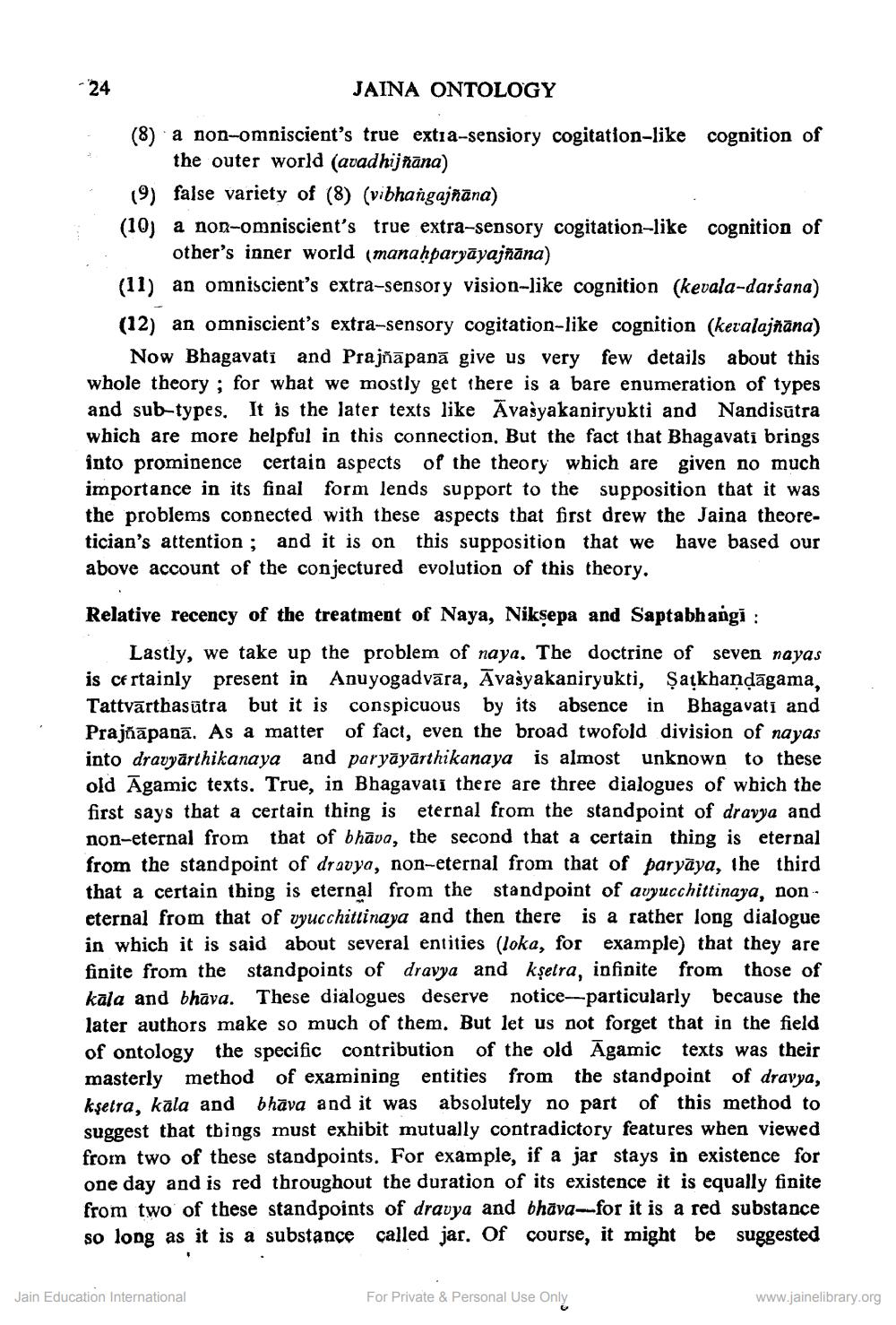________________
- 24
JAINA ONTOLOGY
(8) a non-omniscient's true extia-sensiory cogitation-like cognition of
the outer world (avad hijñāna) (9) false variety of (8) (vibhangajñāna) (10) a non-omniscient's true extra-sensory cogitation-like cognition of
other's inner world (manahparyāyajñāna) (11) an omniscient's extra-sensory vision-like cognition (kevala-darsana) (12) an omniscient's extra-sensory cogitation-like cognition (keralajñāna)
Now Bhagavati and Prajñāpanā give us very few details about this whole theory ; for what we mostly get there is a bare enumeration of types and sub-types. It is the later texts like Avasyakaniryukti and Nandisūtra which are more helpful in this connection. But the fact that Bhagavati brings into prominence certain aspects of the theory which are given no much importance in its final form lends support to the supposition that it was the problems connected with these aspects that first drew the Jaina theoretician's attention; and it is on this supposition that we have based our above account of the conjectured evolution of this theory.
Relative recency of the treatment of Naya, Niksepa and Saptabh angi :
Lastly, we take up the problem of naya. The doctrine of seven nayas is certainly present in Anuyogadvāra, Āvašyakaniryukti, Şakhandāgama, Tattvārthasūtra but it is conspicuous by its absence in Bhagavati and Prajñāpanā. As a matter of fact, even the broad twofold division of nayas into dravyārthikanaya and paryāyārthikanaya is almost unknown to these old Āgamic texts. True, in Bhagavati there are three dialogues of wbich the first says that a certain thing is eternal from the standpoint of dravya and non-eternal from that of bhāva, the second that a certain thing is eternal from the standpoint of dravya, non-eternal from that of paryāya, the third that a certain thing is eternal from the standpoint of avyucchittinaya, noneternal from that of vyucchittinaya and then there is a rather long dialogue in which it is said about several entities (loka, for example) that they are finite from the standpoints of dravya and kşeira, infinite from those of kala and bhāva. These dialogues deserve notice---particularly because the later authors make so much of them. But let us not forget that in the field of ontology the specific contribution of the old Āgamic texts was their masterly method of examining entities from the standpoint of dravya, kşetra, kala and bhāva and it was absolutely no part of this method to suggest that tbings must exhibit mutually contradictory features when viewed from two of these standpoints. For example, if a jar stays in existence for one day and is red throughout the duration of its existence it is equally finite from two of these standpoints of dravya and bhava--for it is a red substance so long as it is a substance called jar. Of course, it might be suggested
Jain Education International
For Private & Personal Use Only
www.jainelibrary.org




